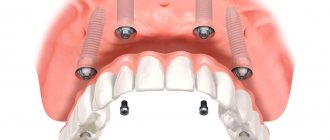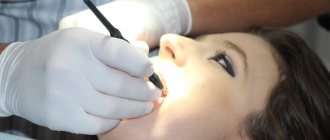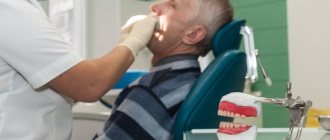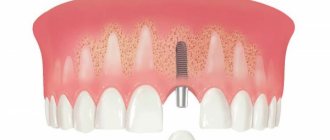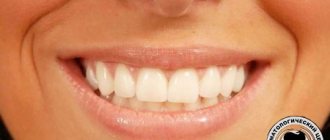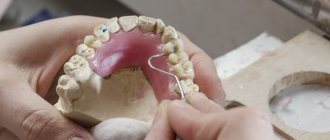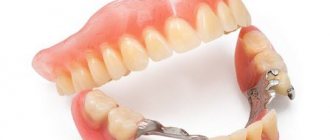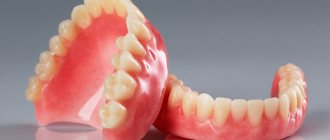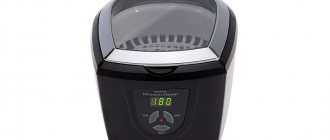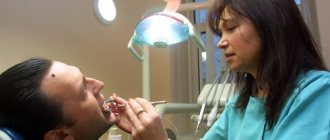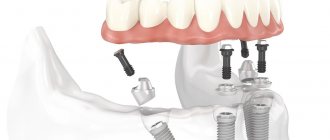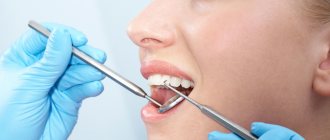24-hour dental clinics:
24-hour dentistry USTADENT
24-hour dentistry USTADENT will be primarily interesting because:
- Works both day and night
- Located near the metro stations "Seligerskaya" and "Kuzminki"
Dentistry offers:
- Aesthetics
- Therapy
- Orthopedic dentistry
- Surgery
- Orthodontics
- Periodontology
- Implantation
On the official website of the clinic you can see the portfolio of each doctor, price list and customer reviews. Discounts are not uncommon - look for specials. offers on the website in the appropriate section. According to patients, the center employs real virtuosos who can successfully solve any problem when it comes to the beauty and health of teeth!
Contact details:
- Address on Seligerskaya - st. Dubninskaya, 26, building 1 (telephone for contact
- Address at metro station "Kuzminki" - st. Zelenodolskaya, 30, building 2
"Clinic 24"
24-hour dentistry in Sokolniki specializes in providing the following services:
- Treatment of caries
- Gum disease
- Recovery
- Whitening
- Cleaning
- Removal
- Implantation
- Prosthetics
- Bite correction
Dentistry is equipped with modern equipment, new techniques are used in work. With the help of a radiovisiograph it is possible to carry out high-quality diagnostics. The arsenal includes materials that meet European standards!
Competitive pricing policy:
- Comprehensive oral hygiene – 3000 rubles
- Discount on wisdom tooth removal – 30%
Contact details:
- dentistry, reviews of which are positive in most cases, is located at: st. B. Ostroumovskaya, 10, bldg. 2
- telephone
Ancient dentures
The first prototypes of dentures for the upper jaw were discovered during excavations of Egyptian tombs. After carefully studying these impressive artifacts, scientists came to the conclusion that even in ancient Egypt, priests wondered “How to make dentures” and widely used slave teeth and ivory dentures for this purpose, which were tied with wire to adjacent teeth. In the tombs of the Etruscans (9th-39th centuries BC), during excavations in the city of Tarquinia, a denture for the jaw was found, made from animal fangs with fastenings in the form of gold rings. And only in the 11th century AD. The beginning of dental prosthetics, as a separate direction in dentistry, was laid by the Arab surgeon Abul-Kassem, who proposed splinting teeth with wire made of precious metals.
Further development of orthopedic dentures took place in Europe. In the 16th century, the French surgeon Ambroise Paré thought about how to install dentures and came up with designs consisting of interconnected artificial teeth made of ox bone, ivory and even wood. However, later, the teeth of deceased people, for example, soldiers who died during military battles, were more often used for prosthetics. The first porcelain dentures, most similar to modern ones, were made in the 19th century, but the bases for them were still made of wood, ivory and gold. It was only in 1848 that these materials were replaced by rubber. Our country has also made a significant contribution to the development of technology for the manufacture of dentures. Russian researchers introduced the production of dentures from acrylic plastic and discovered the suitability of stainless steel for the manufacture of fixed dentures.
The best children's dental clinics:
Zubrenok – dentistry for children
Not only adults, but also children need oral care.
We also include the Zubrenok children's clinic in the rating of Moscow dentistry, where a number of procedures are performed safely, painlessly and with high quality:
- X-ray
- Scanogram
- Treatment of caries
- Treatment of pulpitis and periodontitis
- Laser diagnostics
- Removal of primary/permanent teeth
- Treatment under anesthesia
- Tongue frenulum surgery
- Cystotomy operation
- Treatment under a microscope
Doctors at the Zubrenok clinic, according to reviews from both young and adult clients, are able to ensure that a little patient’s teeth are healthy, his smile is beautiful, and his mood is excellent!
Additional benefits:
- There is a cumulative discount - 3-12%
- By visiting a doctor on a weekday you can get a 5-10% discount
Prices:
- Consultation – 690 rubles
- Preventive procedures - from 150 rubles
- Therapy from 280 rubles
Dentistry for children “Zubrenok” is one of the best and at the same time inexpensive clinics in Moscow!
Contacts:
- The center is located at: Balaklavsky proezd, 2, building 5
- Opening hours: daily from 9.00 to 21.00
- Contact phone number
"Markushka"
“Markushka” is a pediatric dentistry, reviews of which are 99% positive. The clinic first opened its doors to visitors in 2009. Children are shown love and care here, according to customers. Specialists have created unique conditions for children - a colorful interior, bright clothes for the staff. Before visiting a doctor, they talk to the child to psychologically prepare him for the procedure.
Range of services:
- Prevention of caries
- Professional oral hygiene
- Treatment under anesthesia
- Therapy
- Restoration and restoration of teeth in children
- Surgery
- Periodontology
- Orthodontics
Price list:
- Consultation – 2,000 rubles
- Anesthesia and treatment, lasting 59 minutes – 14,000 rubles
- Application of nitrous oxide – 1500 rubles
- Conduction anesthesia – 400 rubles
- Application anesthesia – 1000 rubles
Additional Information:
- Pediatric dentistry phone number
- Address: st. Uralskaya, 23, building 4
- Opening hours: daily. From 10.00 to 20.00
HelioDent
The clinic is equipped with modern equipment: Vector Para Pro, ZOOM 4 and more. The premises have been refurbished to a high standard. Dentistry operates a dental laboratory - thanks to it, it is possible to achieve high quality prosthetics. The company's staff consists of doctors with a capital letter! They all regularly attend seminars and courses. Consultation is free.
The range of services is very extensive:
- Panoramic shots
- Treatment of caries
- Working with crowns, implants, dentures
- Tooth extraction and cleaning
- Surgery
Dentistry prices:
- Diagnostics – from 300 rubles
- Therapy – from 200 rubles
- Surgery – from 500 rubles
Promotions and discounts are not uncommon here! To make sure of this, look at the corresponding section on the clinic’s official website. According to customers, this place has an impeccable approach to patients. Doctors carefully and painlessly remove teeth, treat them accurately and quickly, and also inexpensively provide additional services to improve the appearance of teeth.
New generation dentures
Today, patients considering which dentures are best to have a huge choice of designs made of biocompatible materials created using innovative technologies, for example, using a computer CAD/CAM system. Low-traumatic methods of orthopedic treatment and high quality dentures made of metal ceramics, ceramics and zirconium dioxide allow you to quickly and effectively restore the functions and aesthetics of the dentition, without causing harm to healthy teeth and even prolonging their life. Of course, the price of a new generation of dentures is quite high, but these costs will be fully justified by your new smile, flawless in all respects. Besides, nowadays you don’t have to worry about how dentures look. Orthopedic products made from any materials look natural and aesthetically pleasing, and diction does not suffer from modern dentures. Plus, if any problems arise with the design, you can always contact the same dentistry where it was installed for you, since all clinics, without exception, offer a guarantee on dentures.
Types of dentures
Now let's talk about what types of dentures there are. Currently, in dentistry there are various designs for replacing one or more teeth, as well as for total prosthetics of an entire dentition. Based on the method of fastening dentures in the oral cavity, they are divided into the following categories.
Removable
The design of removable dentures consists of a base - a base and artificial crowns located on it. Such structures can be complete - to replace all the teeth of one jaw - or partial. As for the types of removable dentures, according to their structure they are classified into plate ones, which are attached to the palate by suction, and clasp structures with locks-attachments or clasps for fixation on the supporting teeth. They are easy to use, and usually patients do not have questions about how to install the structure themselves, or how to remove the denture for hygiene procedures or at night. Unlike other types of orthotics, repairing removable dentures in most cases helps extend the life of the dentures. Removable structures are of the following types:
- Nylon
- Acrylic
- Acrylic-free
Conditionally removable dentures
This type includes complete plate dentures for replacing all teeth supported on implants. This is the best option for those who value high quality but want to save money on prosthetics. In this case, both the upper denture and the lower denture are attached to artificial roots with special cement, and only a dentist can remove them if necessary. The main indication for the use of conditionally removable dentures is the inability to install a large number of artificial roots due to inadequate quality of bone tissue or due to lack of funds. Reviews of these types of dentures indicate that they represent excellent value for money.
Fixed
With the help of this type of orthopedic structures, damaged teeth (enamel, cracks, chips and other defects) are restored. They are also used in orthopedic treatment for the loss of one or more teeth. Only a doctor can correctly remove a denture from the non-removable category. And their service life, as a rule, depends on how responsibly the patient will take care of him, and on the types of dentures used.
- Tabs.
These are microprostheses made of composite materials, ceramics or zirconium oxide, which are manufactured in dental laboratories and are used instead of fillings if the tooth is destroyed by more than 1/3. High-quality dental inlays fit tightly to the tooth and protect it from further destruction.
- Veneers.
Thin onlays for correcting the color, shape and eliminating various defects of the front teeth. They are produced directly and indirectly. The direct method involves the formation of veneers from a composite material directly on the patient’s ground teeth, and the indirect method involves the creation of ceramic or zirconium oxide plates based on dental casts in dental laboratories. Orthopedic veneers are considered a new generation of dentures.
- Dental crowns.
These structures are caps made of biocompatible materials that are placed on the ground teeth and fixed with dental cement. Crowns are used when more than 2/3 of a tooth is destroyed. In addition, a dental crown can be used to restore a completely missing tooth by securing it to an installed implant.
- Bridge prosthesis.
These are permanent orthopedic structures consisting of two crowns and artificial teeth between them. The installation of bridge-type dentures is carried out using grinded teeth or implants implanted into the jawbone. In this case, a proper dental bridge should serve to replace no more than two missing teeth in a row.
- Implant.
An artificial tooth root that is implanted into the jaw bone and serves as a support for a separate crown, bridge, or full denture when replacing the entire dentition. The orthopedic structure is attached to the implant using an abutment retainer or dental cement. Implants usually come with a lifetime warranty and are permanent dentures and do not need to be replaced.
